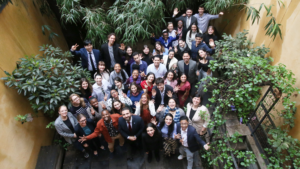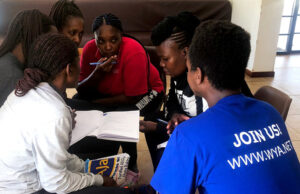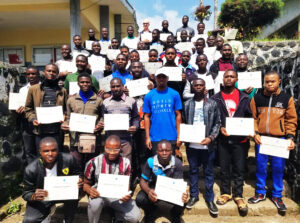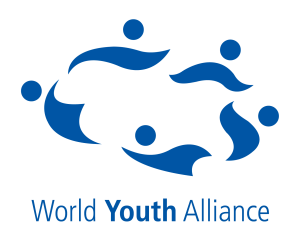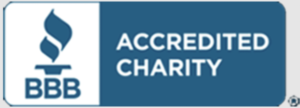
On 2014, the Human Dignity Curriculum (HDC) made it down to Mexico for the testing of a pilot. This was the first HDC pilot to be conducted in Spanish and it was administered by the staff of World Youth Alliance Latin America. HDC was administered to a bilingual school, located in the south of Mexico City, with almost 200 young Mexican elementary school students participating to it.
The 9-session program was given to students of 3rd, 4th, and 5th grade and gave the staff first-hand experience of how the curriculum can be adapted to a school’s curriculum and how behavioral change can happen in students exposed to the material.
Students and children were shocked by the whole concept of excellence and how they can become excellent human beings. Not only understanding the personality of humans but also the differences between humans and the rest of the world’s flora and fauna also enabled them to comprehend how humans are endowed with choice and how this choice can be used responsibly. In one of the sessions, one of the students even related the concept of excellence to Spiderman’s uncle Ben, when he was told the superhero “With great power comes great responsibility”, expressing how in the world humans have a great deal of power and are very different from the rest of the living things.
Certainly, this implementation didn’t come without challenges and our team had to face several. Possibly, the largest that had to be faced is that when it comes to education there is a great deal of difference in the learning processes of all the students. Therefore, several students would understand and get the ideas as the team would administer them, whilst others would need several additional attentions from the team and different activities to get the idea the proper way. There were also challenges relating to some content in the materials that were not understood by the children, for instance, that in Latin America giving out cards for the holidays or when someone is sick is not common. This is an example of the inculturation that is needed as the program is implemented in a variety of settings.
This pilot gave great experiences and learnings for all of those involved in it. These experiences not only had to do with the behavioral change of the students, but with how children could express their value and the value of their peers. During the whole pilot, the team administered the curriculum to a student with diagnosed autism who was usually alienated from the rest of his classmates. By the end of the pilot, two or three sessions before, he was part of a rally activity that was formulated and he was not only actively participating, but he was laughing as he did so. His teachers were very impressed by this because this was not only not normal behavior for him but, in years of knowing him, they had never seen him so integrated to the group. This can be seen not only because HDC helped him grow in a personal way, but because his classmates changed in a way that created a more welcoming climate for him. It is impressive how when you give children the knowledge of their worth this channels into the respect and love of others too.
The Human Dignity Curriculum is currently preparing to be released for Grades K through 8 and this couldn’t make us happier. We look forward to helping to bring a course to children, that has been tested in so many places in the world, and that can also create such an important change in children and their lives. With HDC we see not only how important is the knowledge for one’s self, but also for those surrounding us. When there is a correct understanding of the nature and powers of the human person things really start moving for the good. Children that previously hadn’t been exposed to terms like human dignity started analyzing their actions and the consequences they would have.
The HDC gives us hope because we have seen first-hand how it can change the environment where children interact. We are so looking forward to the future outcomes of the implementation of this curriculum in Latin America on a bigger scale. In other words, the idea of having, in a couple of years, a generation of young adults that have been exposed to these ideas makes us happy because we can hope for solidarity and respect for human life in a short period of time.
Written by Manuel Soto Alday, World Youth Alliance Latin America Regional Director.

